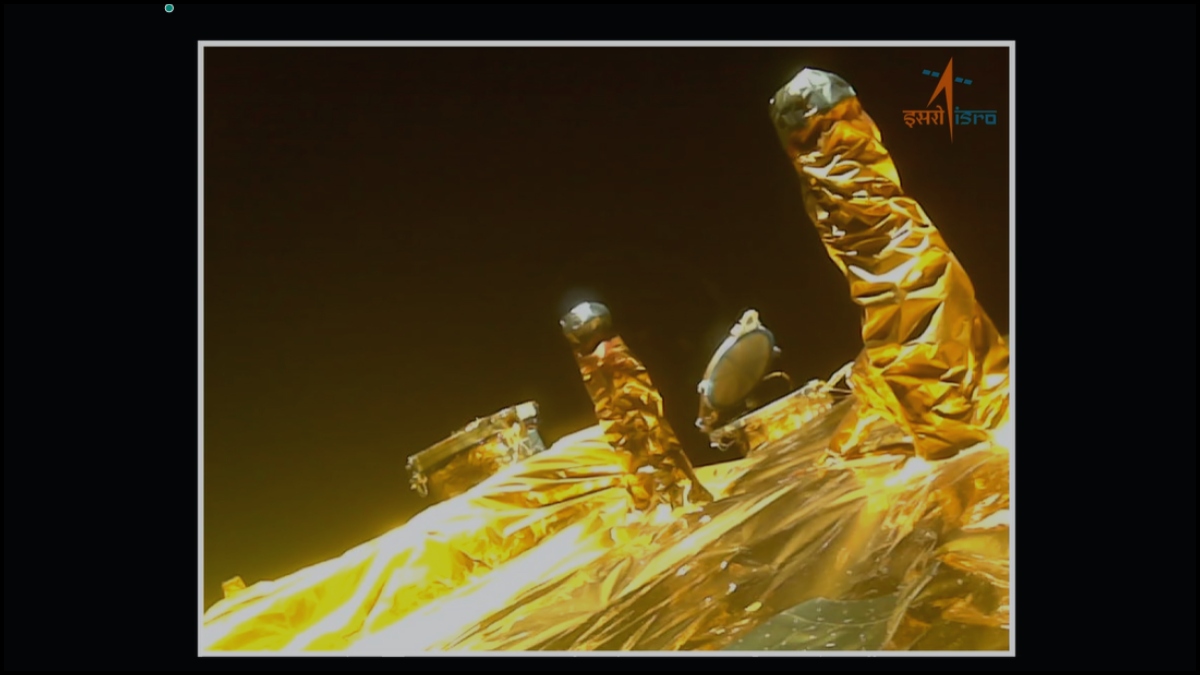Aditya-L1 mission: The Indian Space Research Organisation (ISRO) has unveiled a new video highlighting the shutter operation of the Solar Ultraviolet Imaging Telescope (SUIT) instrument on board Aditya L1. SUIT achieved success in capturing the first full-disk images of the Sun near ultraviolet wavelengths.
The footage, recorded on December 5 through the onboard camera, depicts the SUIT instrument's aperture opening and closing. This operation enables solar radiation to enter the payload and reach the thermal filters.
Watch Aditya-L1 SUIT shutter operation:
ISRO said that SUIT has captured the images in the 200-400 nm wavelength range. SUIT captures images of the Sun's photosphere and chromosphere in this wavelength range using various scientific filters.
SUIT captured images of Sun
SUIT was powered on November 20, 2023, and following the successful pre-commissioning phase, it captured its first light science images on December 5, 2023. "These unprecedented images, taken using eleven different filters, include the first-ever full-disk representations of the Sun in wavelengths ranging from 200 to 400 nm, excluding Ca II h. The full disk images of the Sun in the Ca II h wavelength has been studied from other observatories," said ISRO.
Among the notable features revealed are sunspots, plage, and quiet Sun regions, as marked in the Mg II h image, providing scientists with pioneering insights into the intricate details of the Sun's photosphere and chromosphere.
Here's how SUIT observations will help scientists
SUIT observations will help scientists study the dynamic coupling of the magnetized solar atmosphere and assist them in placing tight constraints on the effects of solar radiation on Earth's climate
The development of SUIT involved a collaborative effort under the leadership of the Inter-University Centre for Astronomy and Astrophysics (IUCAA), Pune. This collaboration included ISRO, the Manipal Academy of Higher Education (MAHE), the Centre for Excellence in Space Science Indian (CESSI) at IISER-Kolkata, the Indian Institute of Astrophysics Bengaluru, the Udaipur Solar Observatory (USO-PRL), and Tezpur University Assam.
ISRO's Polar Satellite Launch Vehicle (PSLV-C57) had on September 2 successfully launched Aditya-L1 from the Second Launch Pad of Satish Dhawan Space Centre, Sriharikota. Aditya-L1 is the first Indian space-based observatory that will study the Sun from a halo orbit around the first Sun-Earth Lagrangian point (L1), which is located roughly 1.5 million km from the Earth.
According to ISRO, the spacecraft placed in a halo orbit around the Lagrange point 1 (L1) of the Sun-Earth system, which is about 1.5 million km from the Earth, has the major advantage of continuously viewing the Sun without any occultation or eclipses.
Also Read: ISRO's Aditya-L1 captures full-disk images of Sun | See first pictures

